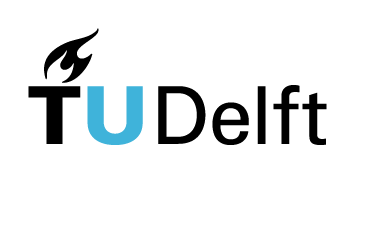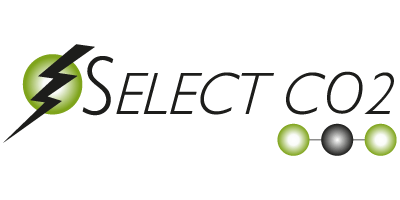The bulk of the consortium is from academia, which is optimally suited for this low TRL project (goal to reach TRL level 4). However, the inclusion of a large industry partner such as De Nora Industries and a life cycle analysis agency RINA Consulting SPA will help develop routes towards higher TRL levels, whereas Pretexo will help disseminate and communicate project results to help increase the project’s reach. All partners are experts in the field in which they will be focusing on in this project and all have over a decade of experience in their field of expertise.
 |
Technical University of Denmark - DTU-EX (SurfCat).The general theme of the research at SurfCat is the fundamental study of the functionality of nanoparticles with particular focus on reactivities of relevance for catalysis used in connection with the environment and for energy production. Here we are involved in three disciplines of catalysis: Thermal Catalysis, Electro-catalysis and Photo-catalysis since in all three cases the detailed surface reactivity of nanostructured materials are the common denominator.www.dtu.dk |
 |
Technical University of Denmark - DTU-TH (CatTheory)The overarching aim of CatTheory is to develop general theories of heterogeneous catalysis and electro-catalysis. This includes development of a fundamental understanding of chemical processes at the gas-solid and liquid-solid interface as well as chemical conversion processes with a special emphasis on sustainable production of fuels and chemicals. In addition there is the exploration of links to and inspiration from related areas in homogeneous and biological catalysis.www.dtu.dk |
 |
Technical University Berlin.The Technical University Berlin (TUB) is a tier-one Science and Engineering school in Germany. Since 2005 the TUB is home to the German National Center of Excellence in Catalysis “UNICAT”, which seeks to bring together fundamental concepts and understanding of chemical and biochemical catalytic processes.www.tu-berlin.de |
 |
Delft University of Technology.The Delft University of Technology (TUD) is consistently rated as the top technical university in the Netherlands, while also being its oldest public university. The university has a strong history of integrating research with industrial partners and with support from the government and industry formedthe ‘e-Refinery Initiative’ in 2017 which focuses research efforts on advancing technologies which use renewable electricity to create chemical bonds. www.tudelft.nl |
 |
Industrie De Nora.De Nora is a global supplier of innovative technologies and is recognized as a partner of choice for important industrial electrochemical processes and water treatment solutions. Driven by the philosophy of continual improvement, pursued since its foundation in 1923, De Nora develops and manufactures electrodes and electrochemical systems with high performance, and offers advanced disinfection and filtration technologies to solve problems related to municipal and industrial water treatment. De Nora is committed to the development of unconventional solutions to achieve the energy transition to decarbonization, hydrogen economy, and clean water for everyone. More than 1,600 dynamic and knowledgeable employees work together for a sustainable future.www.denora.com |
University of Surrey.The University of Surrey group will produce (and characterize) the anion-exchange membranes and ionomers required for use in the CO2 electrolysis cells. This will involve the measurement of ion conductivities under different conditions, which will include an effort to establish if AEMs/AEIs can be fabricated that conduct hydroxide ions in preference to (bi)carbonate ions.www.surrey.ac |
|
Swiss Federal Institute of Technology Lausanne.EPFL is one of two national universities in Switzerland. EPFL was founded in 1969 and has an annual budget of 965 MCHF, 2/3 funded by the Swiss government. It is devoted to education, research, and technology transfer in natural sciences and engineering disciplines. EPFL is a growing, ambitious university with currently more than 13’834 student and staff members, and 340 laboratories. It strives for excellence, which is also reflected in the Shanghai ranking where it is ranked 14th in the world and 2nd in continental Europe. EPFL has established 210 start-ups between 2000 and 2015.www.epfl.ch |
|
 |
Rina Consulting SPA.RINA is a global corporation that provides services across the Energy, Marine, Certification, Transport & Infrastructure and Industry sectors through a global network of 170 offices in 65 countries. Through its 3.700 talented professionals, RINA provides a wide range of high quality tailored solutions aiming to back up the market operators across the entire life cycle of their projects. All RINA services are performed at the highest professional level, understanding and complying with Client’s needs and requirements while taking into due consideration sustainability and health, safety and environmental targets.www.rina.org |
PRETEXOPretexo is a SME (EURL) – France created in 2007 by Dr Nathalie Cros. Pretexo has developed various activities to facilitate and improve information sharing, communication and dissemination between partners and towards the public.www.pretexo.com |
|
SLAC National Accelerator Laboratory.Our plan is to bolster mechanistic studies on understanding the bifurcation of the ethylene and ethanol pathways by working together with SurfCat and CatTheory to understand the dynamics of active sites under operando conditions. We have already worked closely with SurfCat PIs Brian Seger and Ib Chorkendorff to develop the synchrotron grazing incidence X-ray scattering and spectroscopy methods necessary for such an endeavor at the Stanford Synchrotron Radiation Lightsource at SLAC. Together, we will strategically apply these techniques to the promising Cu electrodes downselected from performance testing.www.slac.stanford.edu |
©
2020 - 2023
All rights reserved - SELECTCO2

